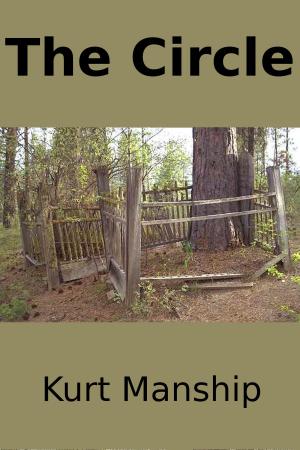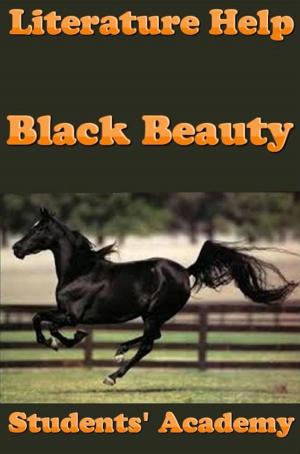| Author: | Lorem J. Fause | ISBN: | 9781466097629 |
| Publisher: | Jerome Francis Lusa | Publication: | January 22, 2012 |
| Imprint: | Smashwords Edition | Language: | English |
| Author: | Lorem J. Fause |
| ISBN: | 9781466097629 |
| Publisher: | Jerome Francis Lusa |
| Publication: | January 22, 2012 |
| Imprint: | Smashwords Edition |
| Language: | English |
During my late teens I was burdened by confusion about the extent of the natural world. I had a broad academic understanding of nature from my schooling, from years of reading National Geographic magazine and from several encyclopedia of nature in my parents' bookcases. Still, a myriad of facts does not comprise a system and it was the system of nature that baffled me. What went on in the woods after the sun set? What happened after the photographers and scientists went home? What was it like during the whole of a snowy winter night? These questions and more like them weighed heavily upon me at a time when I was also seeking answers to the larger personal questions of life. It seemed that the answers to the former might shed light on the latter.
I had spent a great many afternoons of my early youth frolicking in the woods of northeastern Connecticut with my brother and cousin, and yet I knew nothing of the real experience of the creatures that inhabited the forest. A full understanding of the lives of creatures was the missing piece in my natural education.
The creatures of the woods do not lend themselves to ready observation. They are busy surviving and have learned that they must avoid humans if they are to survive for long. They do however leave evidence of their coming and going. They leave footprints in soft soils or in snow. They deposit their scat or feces about the forest floor. Broken twigs sometimes mark their passage through the undergrowth. They leave marks where they have eaten the forest's comestibles. Deer, the largest creatures in the woods that I traveled, leave depressions in grasses or snow where they curl to sleep at night. Some creatures even consciously mark their territory with scrapings. I saw numerous instances of each of these forms of evidence during a period of fours years of afternoons and evenings in the woods.
As a picture of life in the woods began to coalesce for me, I realized that an understanding of a creature and its place in the natural world would give me an understanding of myself in the same. With a preponderance of observations of deer behind me, I chose those magnificent, graceful and intelligent members of the order of ruminants as my surrogate species. What follows is a compilation of real observations about deer in a New England forest told in the first person. I make no apologies for any seemingly anthropomorphic projection, but rather assert that deer exhibit sufficient intelligence such that they must experience something akin to what follows here.
Consider that deer live on the edge of survival day and night in all seasons, all the while remaining nearly unseen by their primary predator man. They raise their offspring under these harsh conditions and pass on their accumulated knowledge to their offspring without benefit of a formal language. This last point, the passing of knowledge to their offspring, leads me to conclude that we must acknowledge these creatures as possessors of culture. If I have erred in the accurate depiction of the life of a deer, it is in failing to attribute sufficient knowledge and insightfulness to these gentle spirits of the woods
During my late teens I was burdened by confusion about the extent of the natural world. I had a broad academic understanding of nature from my schooling, from years of reading National Geographic magazine and from several encyclopedia of nature in my parents' bookcases. Still, a myriad of facts does not comprise a system and it was the system of nature that baffled me. What went on in the woods after the sun set? What happened after the photographers and scientists went home? What was it like during the whole of a snowy winter night? These questions and more like them weighed heavily upon me at a time when I was also seeking answers to the larger personal questions of life. It seemed that the answers to the former might shed light on the latter.
I had spent a great many afternoons of my early youth frolicking in the woods of northeastern Connecticut with my brother and cousin, and yet I knew nothing of the real experience of the creatures that inhabited the forest. A full understanding of the lives of creatures was the missing piece in my natural education.
The creatures of the woods do not lend themselves to ready observation. They are busy surviving and have learned that they must avoid humans if they are to survive for long. They do however leave evidence of their coming and going. They leave footprints in soft soils or in snow. They deposit their scat or feces about the forest floor. Broken twigs sometimes mark their passage through the undergrowth. They leave marks where they have eaten the forest's comestibles. Deer, the largest creatures in the woods that I traveled, leave depressions in grasses or snow where they curl to sleep at night. Some creatures even consciously mark their territory with scrapings. I saw numerous instances of each of these forms of evidence during a period of fours years of afternoons and evenings in the woods.
As a picture of life in the woods began to coalesce for me, I realized that an understanding of a creature and its place in the natural world would give me an understanding of myself in the same. With a preponderance of observations of deer behind me, I chose those magnificent, graceful and intelligent members of the order of ruminants as my surrogate species. What follows is a compilation of real observations about deer in a New England forest told in the first person. I make no apologies for any seemingly anthropomorphic projection, but rather assert that deer exhibit sufficient intelligence such that they must experience something akin to what follows here.
Consider that deer live on the edge of survival day and night in all seasons, all the while remaining nearly unseen by their primary predator man. They raise their offspring under these harsh conditions and pass on their accumulated knowledge to their offspring without benefit of a formal language. This last point, the passing of knowledge to their offspring, leads me to conclude that we must acknowledge these creatures as possessors of culture. If I have erred in the accurate depiction of the life of a deer, it is in failing to attribute sufficient knowledge and insightfulness to these gentle spirits of the woods















